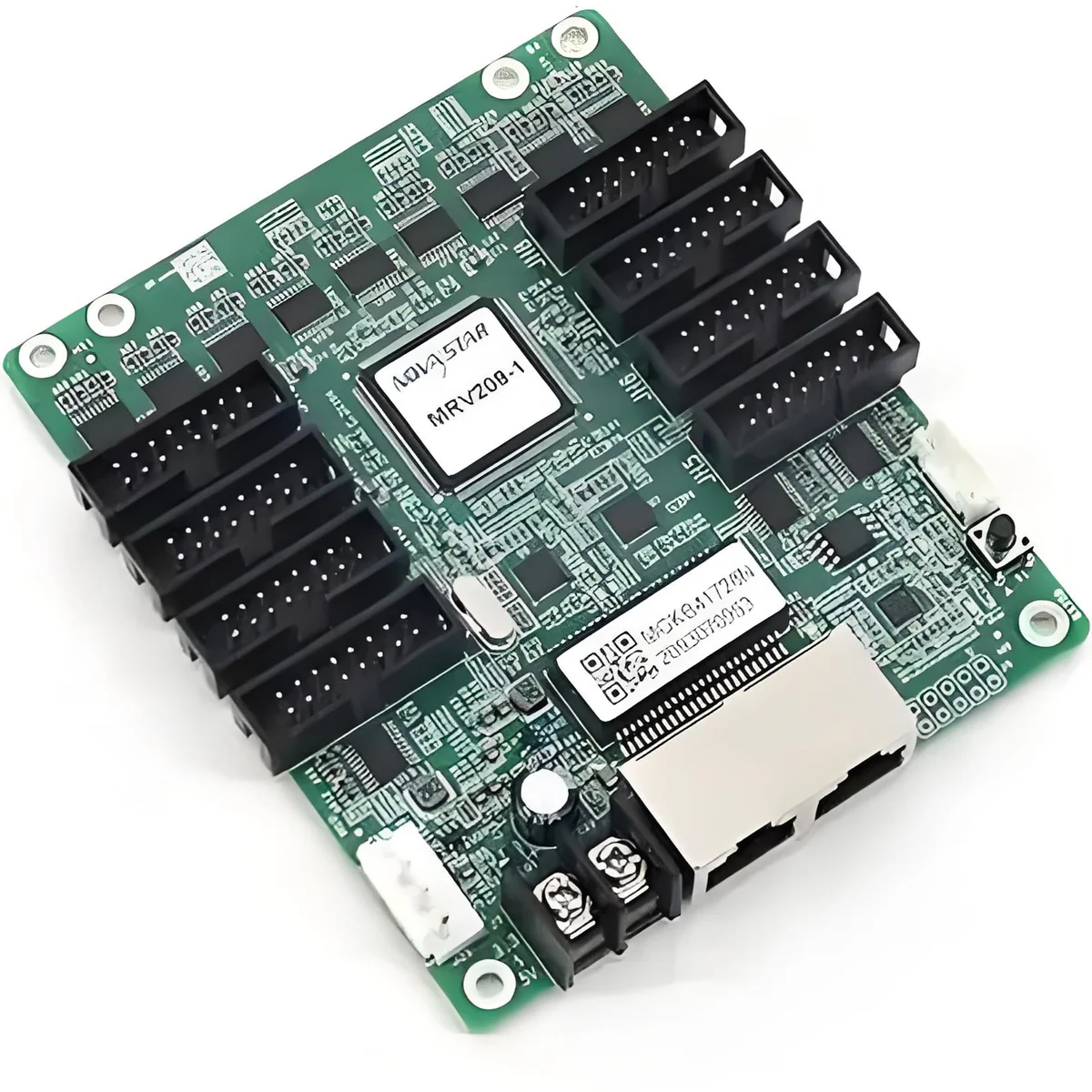In the LED industry, most people focus first on the light beads themselves. But the real secret to whether an LED screen looks stunning and runs smoothly often lies in the controller hidden behind the scenes.
Think of it as the brain of the entire system—it decodes signals, drives the LEDs, adjusts brightness and color, and can even sync with music, remote control apps, or smart home platforms. Choosing the right controller doesn’t just enhance the performance of your display, it also helps you avoid headaches when it comes to maintenance and future upgrades.
With so many brands on the market—from global giants to cost-effective niche players—the differences go far beyond price and appearance. In this post, we’ll look at four of the most widely used controller brands—NovaStar, ColorLight, Mooncell, and Huidu—and compare them in terms of R&D strength, brand reputation, product range, and technical support.
1. R&D Power and Ongoing Innovation: The Stability Factor
NovaStar – A global leader in LED control systems, NovaStar has a large R&D team and a strong track record of continuous product updates. Their firmware is frequently refreshed to maintain compatibility and improve performance. They’re especially trusted for large-scale displays and stage events where reliability is non-negotiable.
ColorLight – Known for high-performance synchronous systems, ColorLight focuses on pushing pixel capacity and data transmission efficiency. Their receiving cards support demanding video walls and small-pixel-pitch installations with ease.
Mooncell – Though not as large as NovaStar, Mooncell has carved out a niche in full-color high-refresh solutions. Their cards deliver smooth playback at a competitive price, making them popular in retail advertising and digital signage.
Huidu – Targeting small- to mid-sized projects, Huidu emphasizes ease of use and affordability. Their asynchronous controllers dominate the storefront and shop-sign segment, offering plug-and-play convenience.
2. Brand Reputation and Market Recognition: Confidence Matters
NovaStar – The go-to choice for international stage productions and large projects. Extensive tutorials and case studies make it easy for new users to get started.
ColorLight – Highly regarded among developers and technical users, with an active DIY and integration community around its products.
Mooncell – Well known in the advertising and commercial display market. Often recommended as the first choice for smooth, high-refresh advertising screens.
Huidu – A favorite among small businesses and signage contractors. Users consistently highlight its intuitive software and fast customer support.
3. Product Range: Covering Every Level of Need
NovaStar – Offers everything from entry-level receiving cards to professional video processors, with full 4K/8K support. Ideal for high-end stage and outdoor LED walls.
ColorLight – Strong in sending/receiving cards with flexible combinations, plus software and expansion modules for fine-pitch displays.
Mooncell – Specializes in synchronous full-color and high-refresh cards. While the range isn’t the widest, it’s highly optimized for advertising and commercial signage.
Huidu – Provides both synchronous and asynchronous products, from budget monochrome cards to advanced full-color solutions. A practical one-stop option for small to medium LED projects.
4. Service and Technical Support: Ensuring Smooth Delivery
NovaStar – Backed by an official training and certification system, with global branches offering localized support.
ColorLight – Provides SDKs and APIs that make life easier for system integrators and developers. A good choice for projects that need customization.
Mooncell – Offers focused documentation and case studies for retail and signage use cases, so customers can find answers quickly.
Huidu – User-friendly software paired with multilingual manuals makes setup straightforward, even without deep technical knowledge.
5. Extra Selection Tips: The Details Engineers Care About
Beyond brands and product lines, engineers often look closely at details like:
Dimming frequency – Low frequency can cause flicker on camera, which is unacceptable in broadcast or stage use.
Power margin – It’s best to size controllers at 120–150% of actual load to avoid running at full capacity.
Ingress protection – Outdoor applications should be at least IP65 rated.
Compatibility and expansion – Can it integrate with DMX consoles, Tuya smart systems, or audio inputs?
Ease of installation – Terminal design, rail mounting support, and accessories all make a difference in real projects.
These small details often decide whether a controller is just usable or truly reliable.
6. Real-World Scenarios![]()
![]()
To make the comparison more tangible, let’s look at a few common scenarios where different types of receiving cards might be applied. These are simply illustrations of how users in different projects might match their needs with specific hardware:
-
Medium-sized LED displays often prioritize stable performance with balanced pixel capacity. In such cases, a card like the Novastar MRV412-N (512×384 pixels, 24-group parallel RGB) is frequently used.
-
High-resolution installations, such as fine-pitch indoor video walls, may require higher pixel capacity. A card like the Colorlight 5A-75B (192×1024 pixels, 16 parallel data groups) is a typical fit.
-
Full-color, high-refresh applications—for instance, digital signage in retail or advertising—might benefit from something like the Mooncell A708 (512×256 pixels, high-refresh rate).
-
Projects demanding wide IC compatibility and flexible refresh options, such as stage backdrops or multi-format screens, often make use of cards like the Huidu HD-R716 (160×1024 pixels).
These examples highlight how different requirements—resolution, refresh rate, compatibility, or project scale—naturally align with different receiving card models.
7. Conclusion
Choosing an LED controller isn’t just about cost or looks—it’s about evaluating R&D strength, reputation, product coverage, and technical support. The differences between manufacturers determine whether a controller is better suited for home décor, retail spaces, or full-scale engineering projects.
By understanding these distinctions, you’ll be able to cut through the noise of endless options and select a controller that truly matches your project—delivering stable, impressive lighting results that last.

